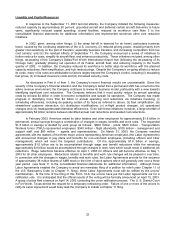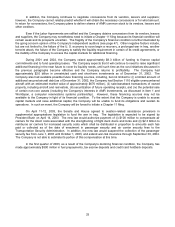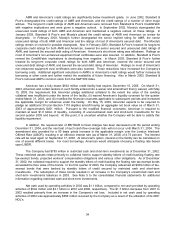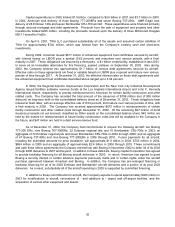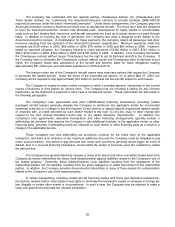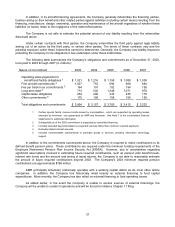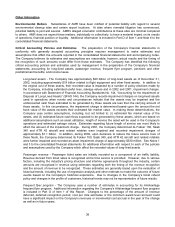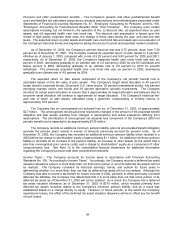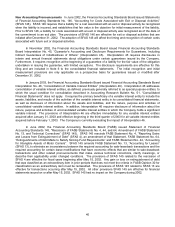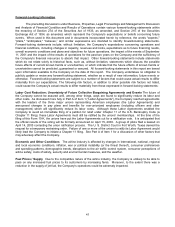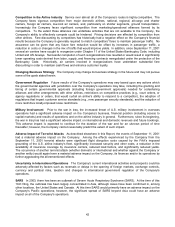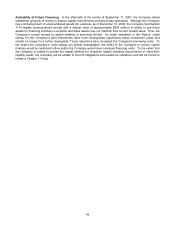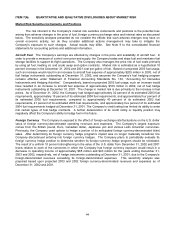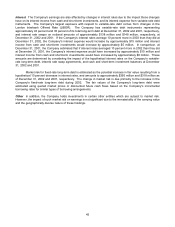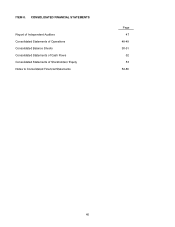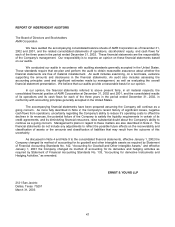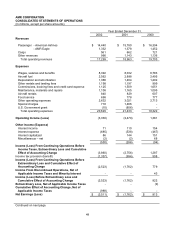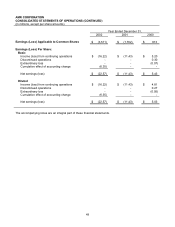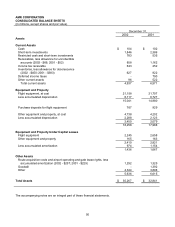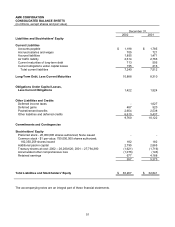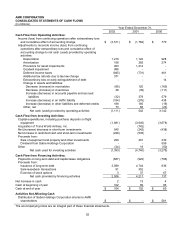American Airlines 2002 Annual Report Download - page 44
Download and view the complete annual report
Please find page 44 of the 2002 American Airlines annual report below. You can navigate through the pages in the report by either clicking on the pages listed below, or by using the keyword search tool below to find specific information within the annual report.42
Competition in the Airline Industry Service over almost all of the Company’s routes is highly competitive. The
Company faces vigorous competition from major domestic airlines, national, regional, all-cargo and charter
carriers, foreign air carriers, low-cost air carriers, and, particularly on shorter segments, ground transportation.
Increasingly the Company faces significant competition from marketing/operational alliances formed by its
competitors. To the extent those alliances can undertake activities that are not available to the Company, the
Company’s ability to effectively compete could be hindered. Pricing decisions are affected by competition from
other airlines. Fare discounting by competitors has historically had a negative effect on the Company’s financial
results because the Company is generally required to match competitors' fares to maintain passenger traffic. No
assurance can be given that any future fare reduction would be offset by increases in passenger traffic, a
reduction in costs or changes in the mix of traffic that would improve yields. In addition, since September 11, 2001
several air carriers have sought to reorganize under Chapter 11 of the United States Bankruptcy Code, including
United and US Airways. Successful completion of such reorganizations has resulted or would result in significantly
lower operating costs derived from labor, supply, and financing contracts renegotiated under the protection of the
Bankruptcy Code. Historically, air carriers involved in reorganizations have undertaken substantial fare
discounting in order to maintain cash flows and enhance customer loyalty.
Changing Business Strategy The Company may change its business strategy in the future and may not pursue
some of the goals stated herein.
Government Regulation Future results of the Company's operations may vary based upon any actions which
the governmental agencies with jurisdiction over the Company's operations may take, including the granting and
timing of certain governmental approvals (including foreign government approvals) needed for codesharing
alliances and other arrangements with other airlines, restrictions on competitive practices (e.g., court orders, or
agency regulations or orders, that would curtail an airline’s ability to respond to a competitor), the adoption of
regulations that impact customer service standards (e.g., new passenger security standards), and the adoption of
more restrictive locally-imposed noise restrictions.
Military Involvement Prior to the war in Iraq, the increased threat of U.S. military involvement in overseas
operations had a significant adverse impact on the Company’s business, financial position (including access to
capital markets) and results of operations and on the airline industry in general. Furthermore, since its beginning,
the war in Iraq has had a significant adverse impact on international and domestic revenues and future bookings.
This adverse impact is expected to continue for the duration of the war and for an uknown period of time
thereafter; however, the Company cannot reasonably predict the extent of such impact.
Adverse Impact of Terrorist Attacks As described elsewhere in this Report, the events of September 11, 2001
had a material adverse impact on the Company. Among the effects experienced by the Company from the
September 11, 2001 terrorist attacks were significant flight disruption costs caused by the FAA’s imposed
grounding of the U.S. airline industry's fleet, significantly increased security and other costs, a reduction in the
availability of insurance coverage by insurance carriers, reduced load factors, and significantly reduced yields.
The occurrence of another terrorist attack (whether domestic or international and whether against the Company or
another entity) would again have a material adverse impact on the Company, its finances and/or its operations by
further aggravating the aforementioned effects.
Uncertainty in International Operations The Company's current international activities and prospects could be
adversely affected by factors such as reversals or delays in the opening of foreign markets, exchange controls,
currency and political risks, taxation and changes in international government regulation of the Company's
operations.
SARS In 2003, there has been an outbreak of Severe Acute Respiratory Syndrome (SARS). At the time of this
10-K filing, the outbreak has been largely concentrated in Asia, although cases have been confirmed in, among
other locations, the United States and Canada. At this time SARS would primarily have an adverse impact on the
Company’s Pacific operations; however, the significant spread of SARS beyond Asia could have an adverse
impact on all of the Company’s operations.


